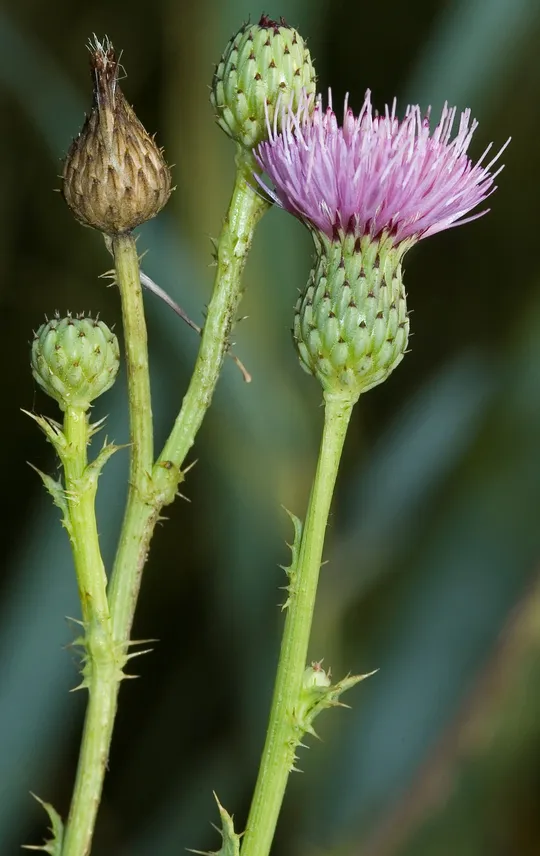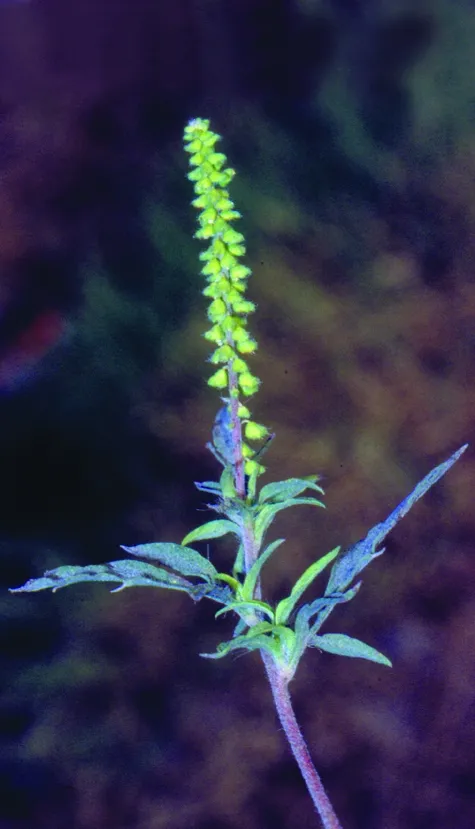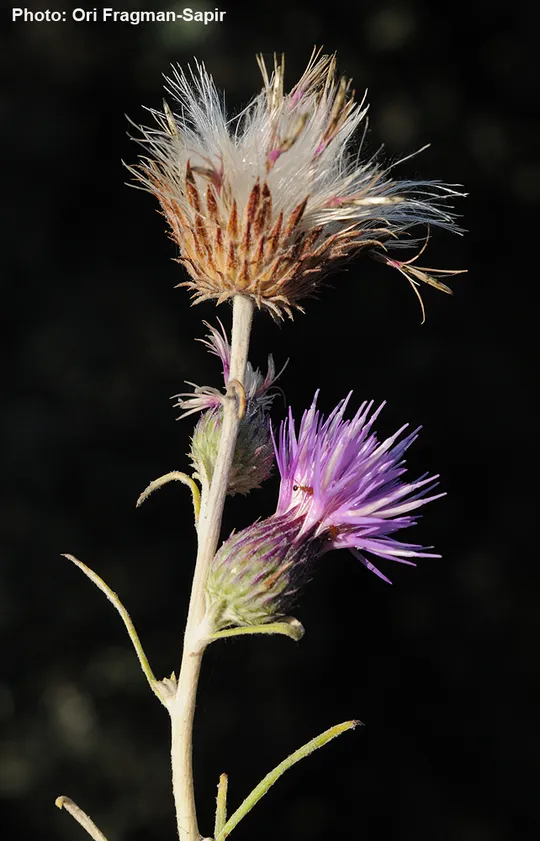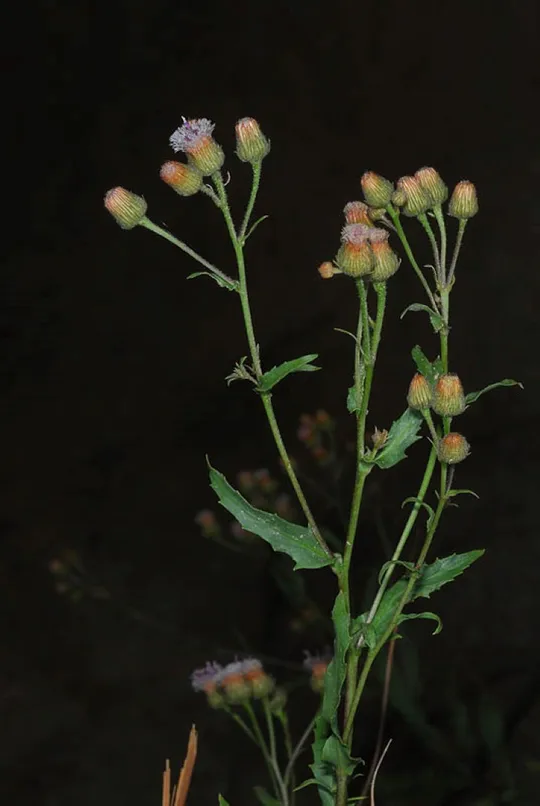Gaillardo Thistle
Cirsium gaillardotii
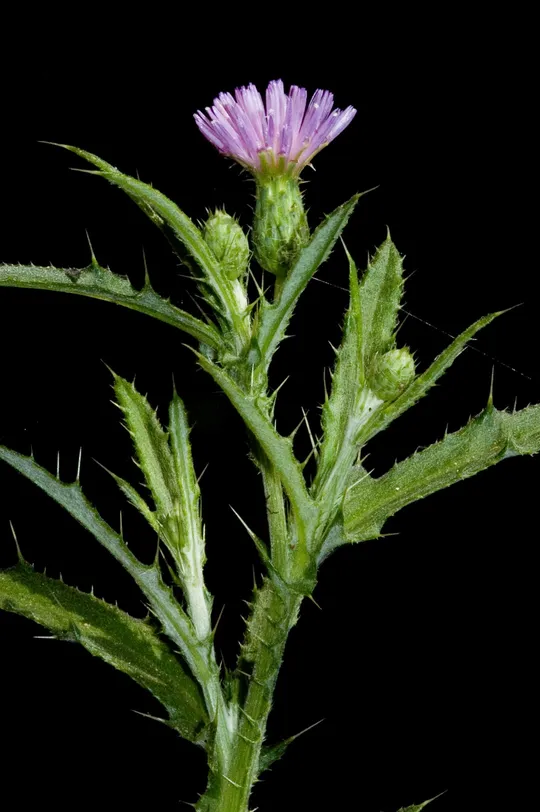

Cirsium gaillardotii grows in the Hula
Valley and at the foot of Mount Hermon on ten documented sites in Israel,
although it is estimated that there are about a dozen sites. In the Hula Valley,
it grows in the vicinity of Nuhela and at the Dan, Snir and Hermon streams.
There is also an observation from En Notera (En Tina). At the foot of Mount Hermon,
it is found near En Qiniye (Sa'ar Stream), Mount Keta and on the Banias plateau.
In the Kinarot Valley it is extinct in Gesher, where Naftolsky collected it in
1926.
Sunny wetlands at the edges of springs and marshes, on
moist soil between flowing streams, riverbanks and canals.
The genus Cirsium includes about 250 species
found mainly in northern Eurasia (65 species) and in North America (50
species). Fifty-two species grow in Turkey and only four species grow in
Israel. The Cirsium species are herbaceous perennials whose leaves are spiny
and as is its extremely spiny capitulum. They usually grow in nitrogen-rich sunny
habitats and create dominant thorny clumps around cattle resting spots and on
areas subject to intensive grazing pressure. All the Cirsium species,
with one exception, have a typical inflorescence – the thorny capitulum is composed
only of androgynous ray flowers, with a purple flower with five unequal lobes.
The distinction between the C. gaillardotii and C. alatum is not an easy one, as both species are very close. In
Turkey, in areas where there is geographic overlapping of species ranges,
hybrids are produced. When considering only morphological characters,
regardless of geographic location and habitat, the differences are: C.alatum is a much smaller plant that turns
blue and according to the analytical flora the upper leaf surface is completely
glabrous; the stem’s wings descend from the leaf nodes only to mid-stem while
in C. gaillardotii the wings continue along the entire length of
the joint. The Flora of Turkey notes different distinguishing features: the
inner and outer involucral bracts of C. gaillardotii have blunt heads, while those
of C. alatum are pointed; the extreme lobe of the stem leaves is much longer than the other lobes and its
underside has woolly hairs while in C. alatum the apical leaf lobe is broad
and short and the underside of the leaf only slightly hairy. The difference
between the distinguishing diagnostic features between the floras of Israel and
Turkey indicates the difficulty in identifying the Cirsium species in
general and those of the Middle East in particular. The many transitional
populations and hybrid forms suggest that this is an actively evolving taxon.
In the Flora of Turkey C. gaillardotii is presented as a subspecies of C. creticum (C. creticum
ssp. gaillardotii (Boiss) Davis & Parris (1975)) that grows in the
Balkans and Italy, and does not grow in Israel. The difference between them is in
the upper stem leaves: in C. gaillardotii they are almost entire, while
in C. creticum they are lobed. The two taxons belong to the northern Cirsium
species group that grows in wetlands and lack a leaf rosette in the year the
inflorescence peduncle grows. It is possible that C. gaillardotii is an
“arid” form of C. creticum in the southeastern region of its range. If C.
gaillardotii is a distinct species, it should receive a
value of "2" for its endemism, because in that case it is endemic
only to Israel and Lebanon.
·
The number of Cirsium
gaillardotii sites reported since the 1970s and 1980s
is large compared to the number of sites reported in the pre-state years or in
the first years following the establishment of the State of Israel. Apparently,
however, it demonstrates mainly the more intensive recording conducted in the northern
Hula Valley in later years. There are insufficient updates for the last 15
years. C. gaillardotii is extinct in one region,
the Kinarot Valley.
·
As a wetland species,
C.
gaillardotii is adversely affected by wetland
desiccation. The decrease in sunny wetlands may eliminate its suitable habitat.
·
C. gaillardotii is protected in the streams of the Dan Valley nature reserves.
·
It does not
appear in red plants lists of other countries.
Field surveys should be conducted to check the status of
populations in the northern Hula Valley and their sizes. Thickets in Tel Dan
and between Dan and Dafna should be opened to ensure the existence of sunny or
partially shaded open habitats that are suitable for C. gaillardotii.
The known populations should be monitored as well.
Cirsium gaillardotii was once
considered endemic to northern Israel and Lebanon, but then it was found to
grow in southeast Turkey as well, in the area of the Gulf of Iskenderun and the
Atai Mountains northeast of the gulf. In Lebanon it grows both wests of Mount
Lebanon and in the water-rich Zabdani Valley in the southern Anti-Lebanon Mountains.
Cirsium
gaillardotii isa
tall perennial grass of wetlands and stream banks in the northern Hula Valley. It
is endemic to the Levant from the Gulf of Iskenderun in southern Turkey to
northern Israel. The Hula populations are at the extreme southern limit of the
species range.
Current Occupancy Map
| 1000 squre meter pixel | 5000 squre meter pixel | 10000 squre meter pixel | |
|---|---|---|---|
| number of observations | 0 | 0 | 0 |
| in total pixels | 0 | 0 | 0 |
| Family | Asteraceae |
| Classification | On the endangered species list |
| Ecosystem | Mediterranean |
| Chorotype | Eastern Mediterranean |
| Conservation Site | Tel Dan |
| Rarity |
1
2
6
|
|---|---|
| Vulnerability |
0
3
4
|
| Attractiveness |
0
0
4
|
| Endemism |
0
0
4
|
| Red number |
1
3.2
10
|
| Peripherality | N |
| IUCN category | DD EW EX LC CR EN VU NT |
| Threat Definition according to the red book | Vulnerable |
 Based on:
Based on:
